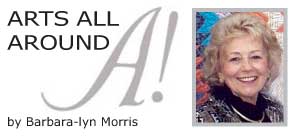

Four hundred years ago this month, a group of British citizens began the struggle at James Forte (later Jamestown) to establish a permanent English colony in the New World. Much hoopla is being made of this anniversary, and I admit to being excited.
Some of that feeling comes from memories of the 350th anniversary when my family made a trip across Virginia from Buchanan County to Jamestown. Back then I was armed with trivia and myths from fourth-grade Virginia history, such as the names of the three ships (Susan Constant, Discovery, and Godspeed) and the stories of
love and fighting among the main characters (Captain John Smith, Chief Powhatan, Princess Pocahontas, and John Rolfe). Little did I know about the context out of which the adventure had been birthed.
This anniversary I am most fascinated by the greater context that led to a business venture by a group of merchants in London. Two decades before 1607, Queen Elizabeth had visions of an English presence in the New World, primarily to keep up with the monarchs of Spain and France who were already entrenched and reaping rewards from their ventures. Consequently, the queen dispatched Sir Walter Raleigh to explore North America with the ultimate intent of establishing a successful English colony. His attempt to do so on Roanoke Island off the coast of North Carolina failed miserably and is known today as the Lost Colony.
Several works setting the context for the next effort have been written in the last decade. The book that most set me on the course of looking at the big picture was David A. Price's Love & Hate in Jamestown: John Smith, Pocahontas, and the Start of a New Nation (2003). His opening paragraph reminds readers of the milestones of 1606, including not only the sailing of three small ships on December 19, but also the opening of a new Shakespearean play, Macbeth.
Furthermore, he notes Rembrandt was born that year and a team of scholars were appointed by the successor to Elizabeth, King James I of Scotland, to come up with a new translation of the Holy Scriptures. That endeavor resulted in the King James version of the Bible.
Seventeenth-century Britain not only looked to the New World, but also to the Old World in the East. Karen Ordahl Kupperman writes in The Jamestown Project (2007): "Every literate person (in Elizabethan England) wants to know about the new. The English reading public avidly devours books on Eastern regions and the Muslim religion and its attendant culture." Furthermore, she writes that England has "intoxication with a wider world through ballads, plays, and paintings."
To offer a panorama of the context of Jamestown, the Virginia Museum of Fine Artsin Richmond has pulled off a spectacular exhibit focusing on the art, culture, and maritime military prowess of Britain (Britannia). Called Rule Britannia! Art, Royalty & Power in the Age of Jamestown, the exhibit calls for adjectives
such as majestic and mammoth, dramatic, unrivaled and unprecedented.
The exhibit is composed primarily of very large paintings from the collection of the current Queen of Great Britain, Elizabeth II. The works normally hang in her private residences and are seldom if ever exhibited to the public. Royal portraits and seascapes depicting departure, battles, and races dominate the exhibit. Additional works are
on loan from the National Maritime Museum in England as well as from other museums and private collections.
The signature portrait of the exhibit, "Queen Elizabeth I: the Armada Portrait" comes from a private family collection ? the Drake Family. That would be the Drakes of Sir Francis Drake (1540-1596) who led the English fleet to defeat the Spanish Armada in 1588. The Armada Portrait of the Virgin Queen for whom Virginia was named is very
large (44x50 inches), as are many of the works. The portrait of King James I, for whom Jamestown was named, is even larger, measuring nearly seven feet by five feet. Contemplating the large scale of the exhibit led me to wonder about the transport of the exhibit to Richmond. Robin Nicholson, the VMFA associate director of exhibition, satisfied my curiosity by explaining the 2007 voyage this way: "It's been epic to secure the traveling."
He explained that the works are too big to be booked in the cargo of a passenger plane, as normally would be the case; therefore, attention was turned to the Netherlands, which has the best specialty cargo service. But the paintings were in competition with the tulips being shipped from Holland worldwide! No possibility of flight in spring. Resolution came when a German cargo company was willing to touch down in England and bring the works to Richmond.
Wow! best describes the works, the catalogue, and the transformation of the Great Hall of the VMFA into a palatial setting for the exhibit. Two complementary displays are fascinating adjuncts to the major exhibition. One elaborates upon the name Britannia, a legendary British warrior-queen who symbolized Britain's maritime dominance. Her image in some instances was modeled on the beautiful Frances Stuart, Duchess of Richmond. There is a marvelous portrait of her. The other exhibit features elaborate period costumes used in a historical documentary.
So, if you are traveling to Jamestown this summer, be certain to visit The Queen and her family and friends on exhibit at the VMFA. If you visit at the end of the first week of May, you might just meet the real Queen Elizabeth II, who is expected to stop by en route from Jamestown to the Kentucky Derby!
Rule Britannia! runs through August 12, Wednesday-Sunday 11 a.m.-5 p.m., 200 N. Boulevard, Richmond, or visit www.thequeeniscoming.com and VMFAwww.vmfa.museum.